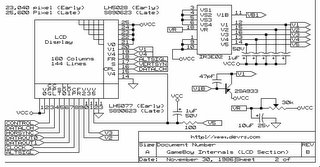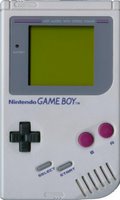The LCD under the hood
Yeah, I told you I would eventually find the schematics for the gameboy LCD and this brings back a lot of Digital Circuit Design memories. As the gameboy specs I mentioned in this post the LDC does 160 columns by 144 Lines. I am just hoping that the PC/104 board I decide to purchase support this, perhaps with some tweaking.
And without further ado, the gameboy LCD schematic :-) :

If you want a closer look you can just click on the schematic.
I have a feeling that one of the defining points to making this project a reality is getting the LCD to work with the PC/104 board and especially buying a board that is made for LCD out will help. There may be a small possibility that I will have to tweak things but we can always hope it won't come to this. :-D



